Captain Hans Busk was one of the original exponents of the Rifle Volunteer movement that formed in Britain during the late 1850’s and eventually became our territorial army in 1908. He was an officer in the 1st Middlesex volunteer rifles and the Royal Victoria Rifle Club and a prolific writer of treatises on the Volunteers with special reference to the use of the rifle.
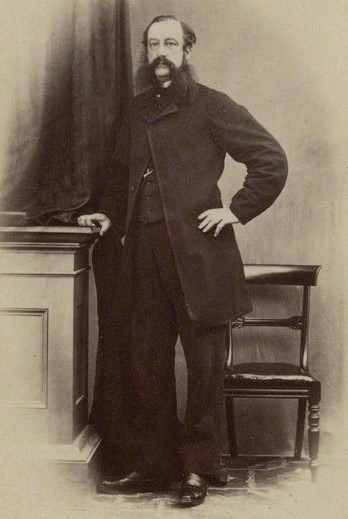
In 1860 Hans registered a design for a combination folding pocket knife and rifleman’s tool. He put a detailed description of his knife in the Appendix of his book “Handbook for Hythe” published in 1860. The School of Musketry was based at Hythe, Kent – hence the title.
Hans commissioned a high quality London tool maker Holtzapffel & Co. of 64, Charing Cross to manufacture the knife to his registered design.
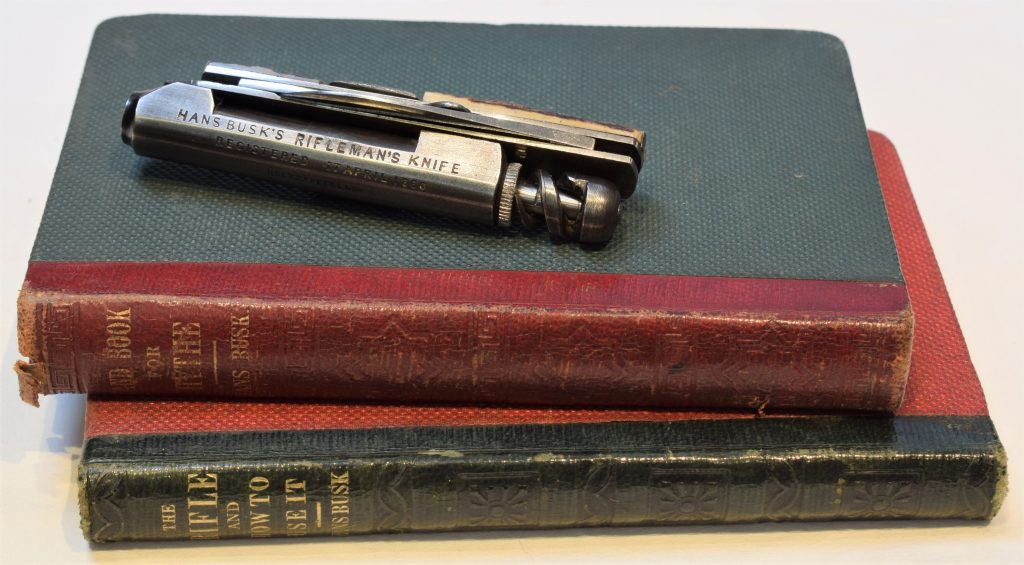
The rifleman’s knife comprises: a single bladed staghorn scaled folding knife with a pair of tweezers and a pricker which slide into the scales, a mainspring clamp suitable for use with an Enfield P53 rifle, a worm to fit on a ramrod to withdraw bullets, turnscrew, nipple key, oil bottle and button hook (a pen blade could be fitted as an option).
It is stamped on the back of the mainspring clamp
HANS BUSK’S RIFLEMAN’S KNIFE
REGISTERED 17 APRIL 1860
HOLTZAPFFEL & Co
The blade is stamped Holtzapffel & Co.
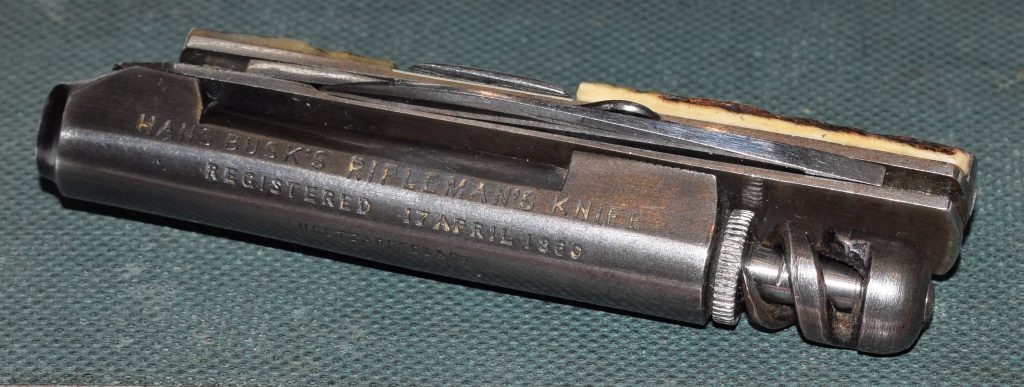

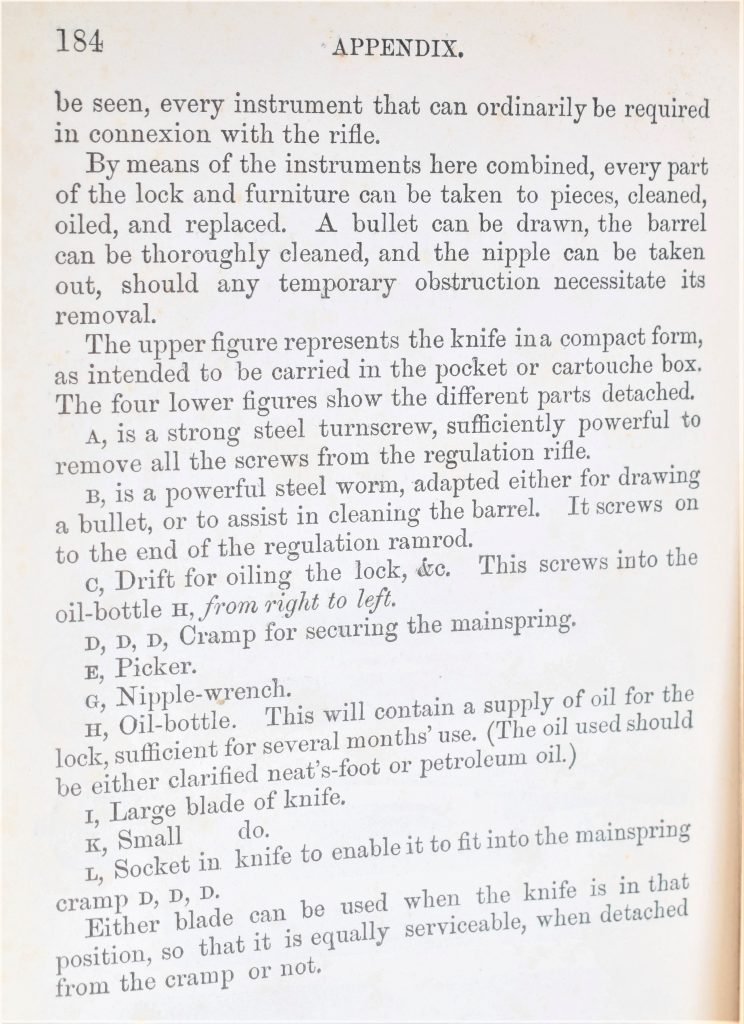
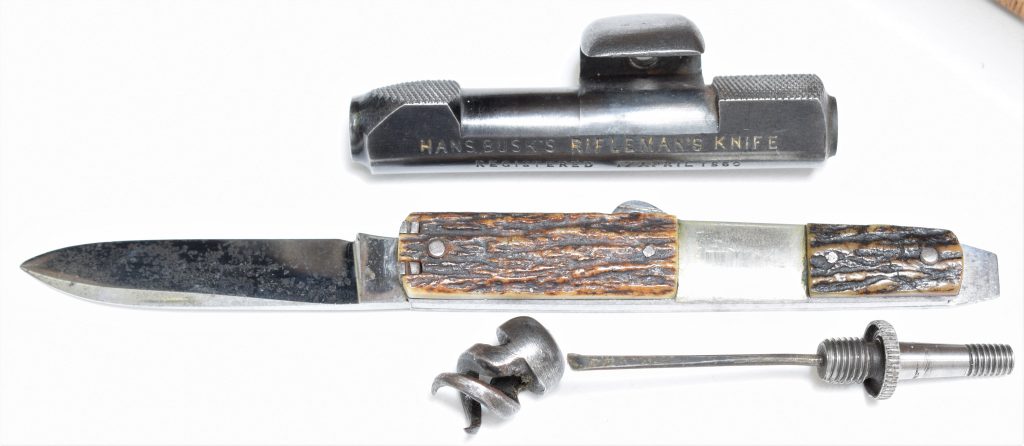
The mainspring clamp is hollow and forms a container for gun oil with an Enfield size nipple key at one end and a knurled cap/spoon at the other end. This clamp slides over the body of the folding knife and clamps on with a fairly tight friction fit. Interestingly the spoon and knurled cap screw into the end of the oiler anti-clockwise so that when the worm is unscrewed from the end of the cap it doesn’t also unscrew the cap off the oiler. When I bought the knife, the previous owner told me he couldn’t undo the oil cap and it took me sometime before I realised it actually unscrewed “the wrong way”. Well thought out though and a sensible answer to the problem of everything unscrewing together.
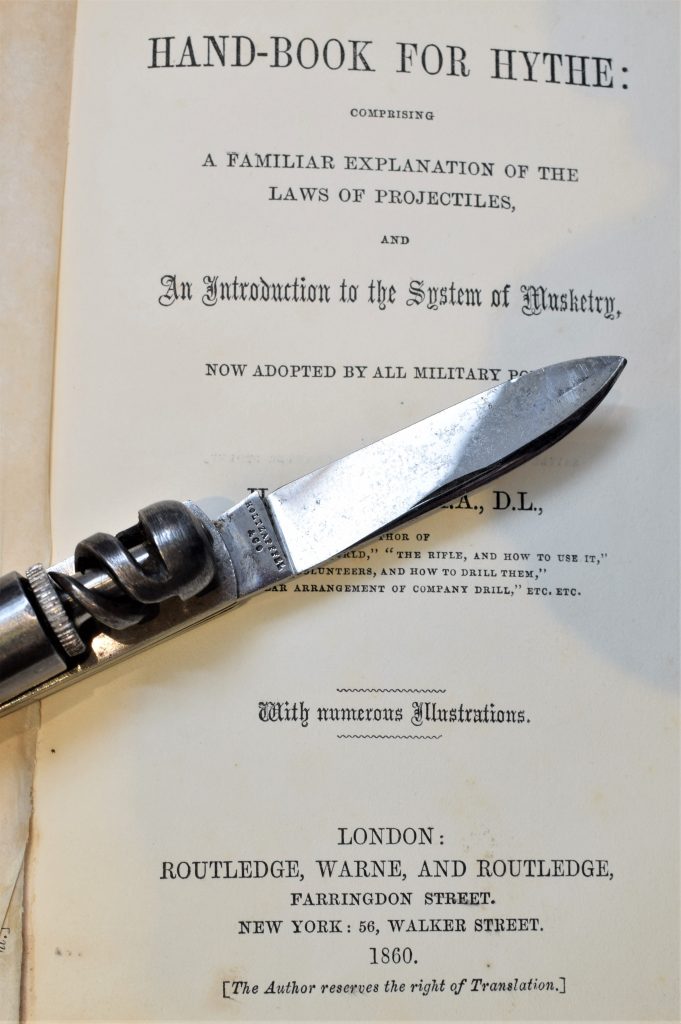

Holtzapffel were very well known for their excellent lathes, tools and hardware and in exhibited at the Great Exhibition in Crystal Palace in 1851. An earlier advertisement summarised their business:
‘Holtzapffel and Co – 64 Charing Cross, beg to inform Mechanical Amateurs, Merchants, and the Trade, that they have now ready for inspection a variety of Turning Lathes, Rose Engines, Lapidary Machines, Portable Forges, Joiners arid other Work Benches, Tool Chests for Carpenters, Bookbinders, Turners, Watchmakers, and various others. Dressing Cases in great variety; Cutlery in all its branches, of the best steel, and warranted. Dealers in Ivory and Foreign Woods. – For Catalogues, with prices, apply to 64 Charing Cross. ‘
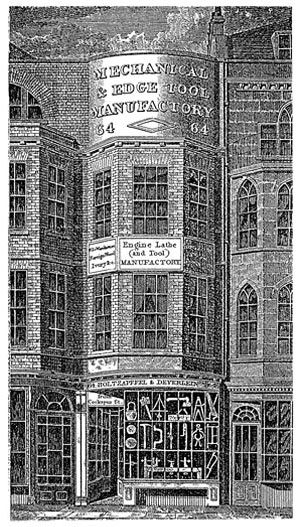
There must have been a number of these rifleman’s knives manufactured and they would have been a pretty handy little gadget for the rifle volunteer, albeit probably rather expensive. They are of high quality manufacture and I can imagine would have formed an ideal gift for the gentleman rifleman of the 1860’s, but this is the only complete one I have seen. You would hope that other examples must still exist and I am aware that one was sold in a Weller & Dufty auction in Birmingham sometime in the 1970’s but this could actually have been the same one I now own.
I did come across two of the folding pocket knife portions (both stamped Holtzapffel & Co.) in an old Sheffield cutlers’ workshop about 40 years ago. Did this mean that Holtzapffel subcontracted the manufacture of the pocket knife portion to a cutlery manufacturer in Sheffield? Or were they being inspected by a cutler with a view to copying them? We shall probably never know.
If anyone reading the article does have one of these rifleman’s knives I should love to hear from you.
More information about Hans Busk can be gleaned from David Minshall’s marvellous web site at http://www.researchpress.co.uk/